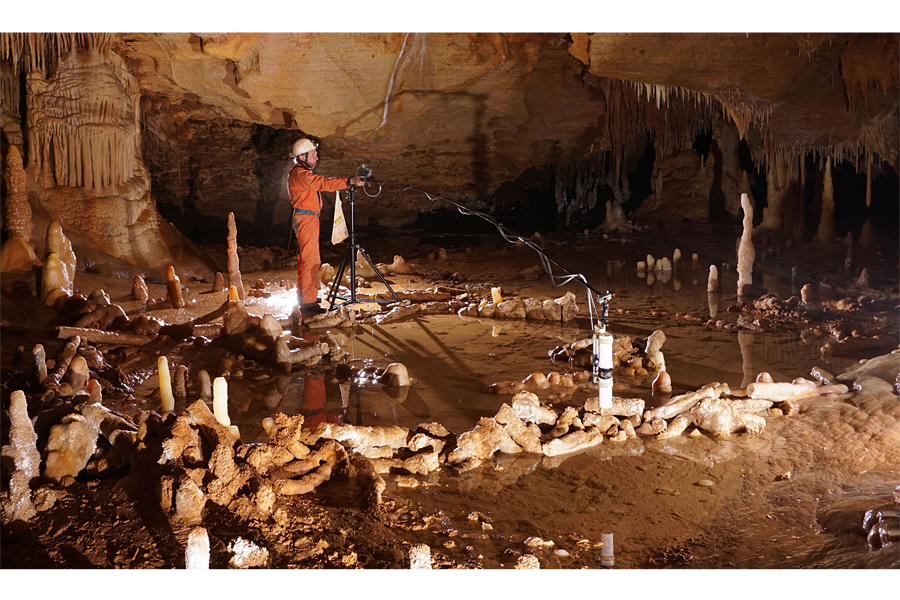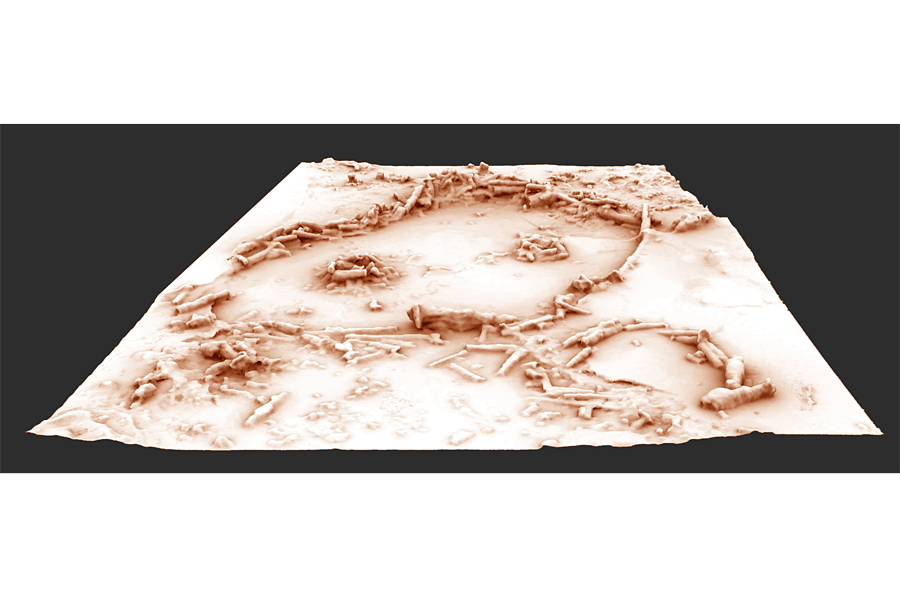Mysterious cave edifice suggests Neanderthals were complex cavemen
Loading...
Bruniquel Cave is pitch-black, pools of water cover the floor, and stalactites hang down from the ceiling.
None of these features are surprising to find in an active subterranean cave in southern France. But right in the middle of the cavern floor lies something strange.
Someone has uprooted stalagmites and used them to build something.
Over 1,000 feet from the current entrance to the cave, more than 400 of the oblong rocks are stacked in various structures. Two constructions form short walls as if to enclose a space. The larger one forms a space of more than 220 square feet.
But here's the catch: The cave has been sealed off and inaccessible to humans for tens of thousands of years.
So who broke off and wrestled about 2.4 tons of rock into neat stacks?
The key lies in when these cave builders worked. A new study published Wednesday in the journal Nature finds that these mysterious stacks were built 176,500 years ago, give or take a couple thousand years.
Homo sapiens had yet to migrate out of Africa at the time, and the structures are too complex and large for cave-dwelling bears to have built them. Who does that leave?
Neanderthals were the only human species in the region at that time.
"It adds to the ongoing idea that Neanderthal was more modern than generally thought before," study co-lead author Sophie Verheyden, a geologist at the Royal Belgian Institute of Natural Sciences, tells The Christian Science Monitor in an e-mail. "We never thought he would go so far underground, something that is generally attributed to the modern human" much later.
No sunlight streams this deep into the ground. And there weren't flashlights 176,500 years ago. So Neanderthals that ventured into this cave would have needed some other light source.
Apparently they had already learned how to control fire by this point. Some of the stacked stalagmites have burn marks on them and some of the structures appear to be hearths of some sort.
"It's the first really good evidence that we have that Neanderthals penetrated very deep into caves and did something extremely unusual," Michael Bisson, an associate professor of anthropology at McGill University who was not part of the study, tells the Monitor in a phone interview. And, he says, "it's one of the earliest bits of evidence for the structured use of space in the European archeological record."
This suggests that early Neanderthal society was remarkably complex and cooperative, compared to previous assumptions.
"This kind of structures requires the mobilization of people who choose, who lead, who advise," and manufacture things, study co-lead author Jacques Jaubert, a professor of prehistory at the University of Bordeaux, France, tells the Monitor in an e-mail. And they did it all over 1,000 feet from any source of natural light.
"All this indicates a structured society," Dr. Jaubert says.
How would Neanderthals use these structures?
"We really don't know at this stage," Dr. Verheyden says. The scientists don't think these people were living in the cave. "We tend to think easily of some kind of ritual or cultural structure but I must say that there is no evidence for it up to now."
Verheyden hopes that further exploration of the cave will yield new clues. And there could be a lot to discover.
A thick layer of calcite covers the cave as it was 176,500 years ago. The drippy cave has continuously deposited more calcite, so what was the floor of the cave when the Neanderthals were there is no longer visible. Any artifacts are trapped beneath that layer.
"I'm really looking forward to whatever they're able to chisel out of the floor," Dr. Bisson says. "And that's what they're going to have to do: chisel it out."
This additional calcite deposition was actually helpful for the scientists, however, allowing them to use Uranium-series dating to determine how much time had passed since the stalagmites were maneuvered into their new locations. They compared the age of the calcite deposited before and after the stalagmites were broken from their original positions.
This discovery is helping to define the differences between Neanderthals and Homo sapiens, Jaubert says – and, in most cases, to erase them. "We believe that at the same time, with modern humans in Africa and Neanderthals in Eurasia, technical levels, social capacities, symbolic way of live and so on are very close if not interchangeable."
And this isn't the first evidence that Neanderthals weren't the stupid brutes they are sometimes considered.
"For the past 15 years there has been an accumulation of evidence to show that Neanderthals were not cognitively inferior to modern humans and had social behavior with ritual or symbolic implications," Paola Villa, a curator at the University of Colorado Museum who was not part of this study, tells the Monitor in an e-mail.
Before performing Uranium-series dating on the rocks, the team suspected that the structures were built by Neanderthals because of archeological work done at the site when it was first discovered in the 1990s. But, says Verheyden, "it is a much older age than we could dream of."
"We would have been very happy with an age of 100 thousand years," she says, as Homo sapiens are thought to have migrated into Europe no earlier than about 45,000 years ago. "But 176,500 years is just crazy-old!"









